 |
||
|
||
| ||
 Despite the fact that NVIDIA produces a wide range of products, it is not a single company in its sphere. There are such giants as ATI Technologies and STMicroelectronics/PowerVR which have different technologies and approaches for realization of, for example, 3D graphics. Let's talk today about the latter tandem and their latest product KYRO II. Taking into account that PowerVR is a generator of ideas, and the processor was developed by STMicroelectronics (STM), it is fair to say that the KYRO II is a product of STM. The KYRO II (as well as the KYRO) is an untypical product. On the one hand, it uses a highly efficient tile architecture which unloads a video memory (it makes such cards much cheaper because there is no need in expensive DDR memory). On the other hand, the architecture of the chipset is quite weak (2 pipelines with 1 texture unit for each). Therefore, the KYRO II will perform excellently in games which do not require a high fillrate of the accelerator (sometimes it can even beat a 4-pipeline GeForce2). But in more modern and 3D complex games the KYRO II considerably falls behind because of a low fillrate. Besides, this GPU lacks for a Hardware T&L unit that is why it needs a powerful CPU for normal operation in modern games. Just look at the KYRO II test results in our 3Digest. Mind the Quake3 tests at the maximum detailing level and the Giants ones. Besides, you should look at the 3DMark2001 scores. In such heavy applications the KYRO II based cards lose even to the NVIDIA GeForce2 MX (note that the Quake3 tests at the maximum load were carried out with the complicated geometry). Nevertheless, the KYRO II is very attractive as far as price/performance ratio is concerned. There are a lot of users playing games 2-3 years old where the KYRO II performs excellently. The complete theoretical base related to this GPU is concentrated in our first reviews; there you can learn peculiarities of video cards on this processor.
Until now we examined the cards only from brand-name manufacturers. But as you know you must pay for such names. Therefore it is interesting to study KYRO II based cards from little-known companies. Manli Technology is not a very popular company. The only thing I know about this company is that its cards are inexpensive. The company produces two video cards on this GPU: 32 and 64 MBytes memory. CardsThe Manli KYRO II cards have AGP x2/x4 interface. One of them is coupled with 32 MBytes SDR SDRAM (on the left) located in 4 chips, the other (on the right) has 64 MBytes SDR SDRAM located in 8 chips on the right side of the PCB. 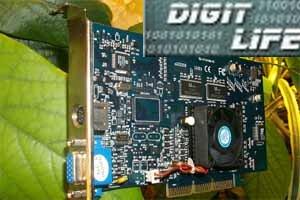 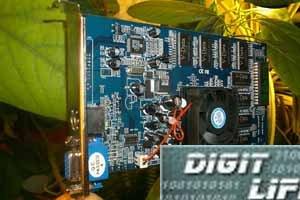   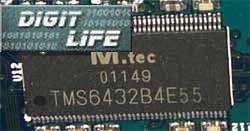 M.Tec produces memory chips for the KYRO II 32 MBytes with 5.5 ns access time which corresponds to 183 MHz. The Manli KYRO II 32 MBytes works at 175/175 MHz. 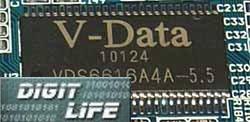 V-Data produces memory chips for the KYRO II 64 MBytes with 5.5 ns access time which corresponds to 183 MHz. The Manli KYRO II 64 MBytes works at 175/175 MHz. The Manli KYRO II 32 MBytes is based on the reference design (a large and half-empty PCB with the memory chips tightly surrounding the chipset). On the back side of the PCB there are blank places for memory extension up to 64 MBytes. That is why I can't understand why the Manli engineers used a different design for a 64 MBytes version. But I have an idea. The PCB is sky-blue like the Hercules 3D Prophet 4500 (KYRO II). That is why I think that both companies ordered cards from one factory. But there were some troubles with a 64 MBytes card and Manli placed an order for it at a different factory. Hence the different designs of these cards. If we take a cooler off, it will be possible to look at the KYRO II: 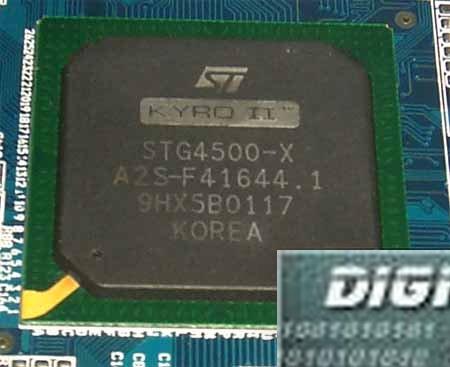 The cooler is usual and suffices for such a processor. The cards ship in cardboard boxes which contain:
OverclockingLike all KYRO II based cards these ones cannot be overclocked much (we achieved a maximum of 180 MHz at the rated frequency of 175). That is why the overclocking wasn't implemented. Installation and driversTest system:
In the tests we used the STM/PowerVR v7.11.14 drivers, VSync was off, the S3TC was enabled. For the comparative analyses we used the following cards:
Test resultsAs a rule, all KYRO II based cards have excellent 2D quality. The today's cards are not an exception. In our 3Digest you can find detailed information on the 3D performance of KYRO II cards. That is why today I will only test the cards in id Software Quake3 v.1.17 - a game test which demonstrates operation of cards in OpenGL with a standard demo benchmark demo002. Quake3 Arenademo002The tests were carried out in two modes: Fast (in 16-bit color) and High Quality (in 32-bit one). 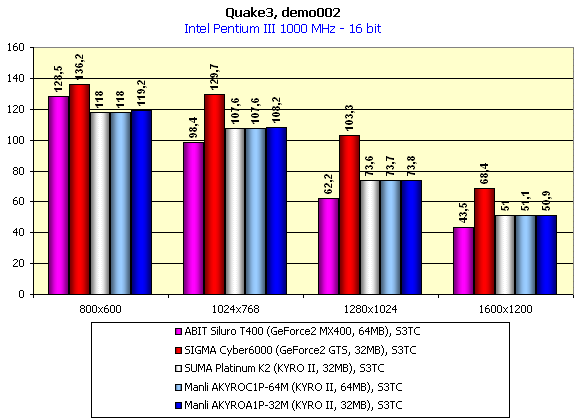 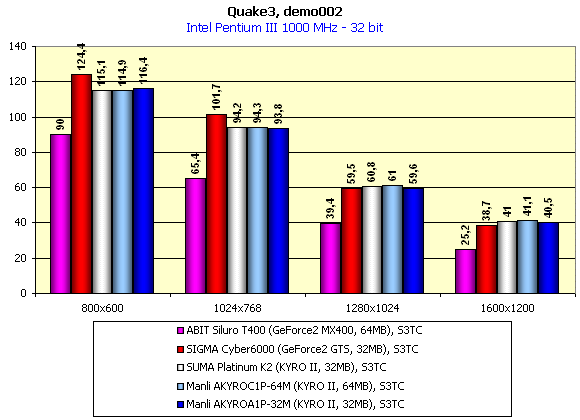 The Manli KYRO II doesn't work worse than the earlier tested cards on this GPU. ConclusionThe cards from Manli are quite cheap for its level but have all the same features as their brand-name brothers. STM is constantly updating drivers (not always positively, though), that is why the KYRO II may become even better. Nevertheless, lack of fillrate is incurable, that is why you have to submit that Giants, for example, run too slow despite the S3TC activation. In our 3Digest you can find a full comparison of characteristics of cards of this and other classes. Highs:
Lows:
Write a comment below. No registration needed!
|
Platform · Video · Multimedia · Mobile · Other || About us & Privacy policy · Twitter · Facebook Copyright © Byrds Research & Publishing, Ltd., 1997–2011. All rights reserved. |